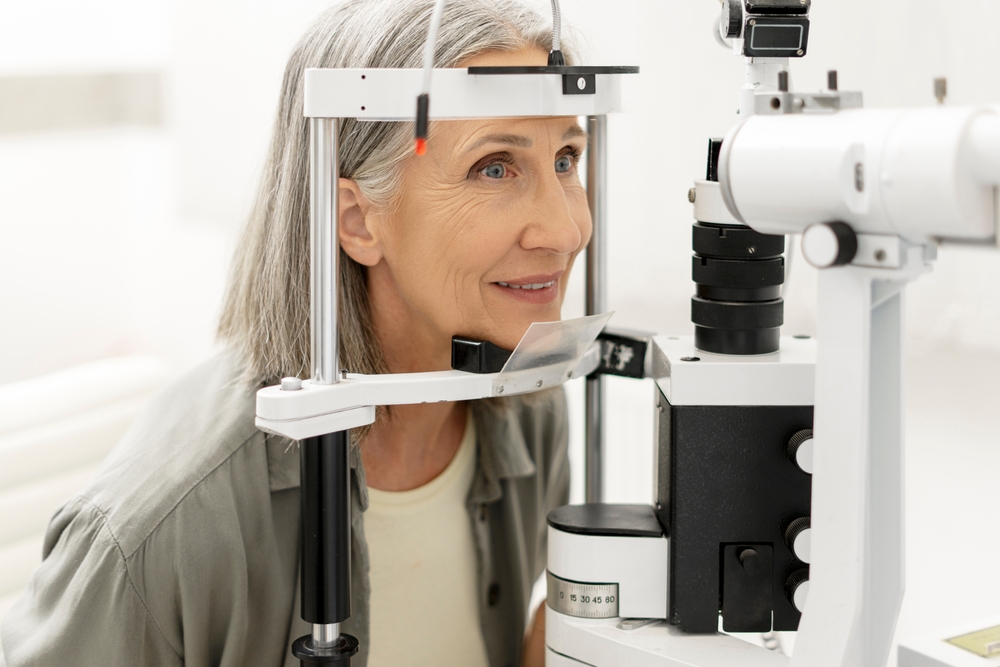As the second leading cause of blindness in the world, glaucoma is a serious eye condition that patients should stay vigilant about. The best way to prevent vision damage from glaucoma and preserve your eyesight is to get regularly tested for glaucoma by your ophthalmologist.
However, the frequency of your glaucoma screenings depends on a variety of factors, like age, medical history, and lifestyle. Keep reading to learn more about how often you should get tested for glaucoma.
What is Glaucoma?

Glaucoma is a common eye condition that causes damage to the optic nerve, leading to vision impairment. If left untreated, the condition can even cause blindness.
It happens when the aqueous humor, a fluid that consistently flows in and out of the eye through its drainage angle, cannot drain at the rate it needs to maintain healthy eye pressure. When your eye pressure begins to rise, it puts pressure on the optic nerve and leads to damage.
The most common types of glaucoma are:
Open-Angle Glaucoma
Open-angle glaucoma is the most common form of the condition and occurs when resistance builds up at the trabecular meshwork of the eye. This prevents the fluid in your eye from draining properly, raising intraocular (eye) pressure.
Open-angle glaucoma tends to develop slowly and often does not present with symptoms until significant damage has occurred.
Angle-Closure Glaucoma
Angle-closure glaucoma is a rarer form of the condition where the drainage angle is too narrow, raising intraocular pressure. This can put you at risk for an acute angle-closure glaucoma attack when your drainage angle is blocked off completely, resulting in a sudden rise in eye pressure.
You may experience symptoms like:
- Blurry vision
- Nausea and vomiting
- Seeing rainbows or halos
- Severe eye and forehead pain
- Red eyes
If you notice any of these signs of an acute-angle closure attack, seek medical attention immediately, as it can cause rapid, irreversible vision loss.
How is Glaucoma Diagnosed?

Your eye doctor at The Eye Center can diagnose glaucoma during a routine eye exam. They may perform tests including:
- Visual acuity testing
- Tonometry, or eye pressure measurements
- Visual field (peripheral vision) testing
- Pupil dilation with examination of the retina and optic nerve
- Corneal thickness measurements
- Examination of the drainage angle
If your eye doctor detects signs of glaucoma, they will likely recommend different treatments depending on how far the condition has progressed.
How Often Should I Get Tested for Glaucoma?
Attending regular eye exams with your eye doctor is the best way to ensure your glaucoma is detected early and causes the least possible damage. The older you get, the more at risk you become for glaucoma, meaning you should undergo more frequent testing.
Adults over the age of 65 should schedule eye exams at least once a year or once every two years. Other risk factors for glaucoma that may mean you need more frequent eye exams include:
- Being over 40
- Having diabetes, high blood pressure, or migraines
- Having a family history of glaucoma
- Using long-term steroid medications
- Have a thinning of the optic nerve or corneal center
- Being nearsighted or farsighted
- Being of Hispanic, African, or Asian descent
- Having a history of significant eye injuries or surgeries
- Having high eye pressure
Based on these factors, as well as your current symptoms, your ophthalmologist at The Eye Center will make personalized recommendations on how often you should be tested for glaucoma.
How is Glaucoma Treated?
Once glaucoma is detected, prompt treatment is necessary to ensure you preserve as much of your vision as possible. Your eye doctor may recommend treatments such as:
Prescription Eye Drops

Often the first line of treatment for glaucoma, prescription eye drops can help lower intraocular pressure either by reducing the amount of fluid your eye is producing or by improving fluid flow through the drainage angle. They often need to be applied according to a strict schedule.
Selective Laser Trabeculoplasty (SLT)
Selective laser trabeculoplasty, or SLT, utilizes laser energy to activate melanin-containing cells in the trabecular meshwork. This helps fluid move through the drainage angle, reducing eye pressure.
iStent
The iStent is a minimally invasive glaucoma surgery (MIGS) device that can be implanted in the eye during cataract surgery to improve fluid outflow. It makes a permanent opening in the trabecular meshwork, lowering intraocular pressure.
Micropulse Laser Treatment
Micropulse laser treatment is a gentler laser treatment for glaucoma that uses tiny pulses of laser energy to promote drainage and lessen intraocular pressure.
Trabeculectomy
Typically only used when other glaucoma treatments haven’t worked, a trabeculectomy is a surgical procedure that involves your ophthalmologist making a passageway from the inside to the outside of your eye to allow for better fluid drainage.
Safeguard Your Vision
The best way to prevent vision loss from glaucoma is to undergo regular eye exams with your ophthalmologist at The Eye Center. They will perform thorough glaucoma testing to spot any signs of the condition and offer comprehensive treatment to ensure you keep seeing clearly for years to come.
Do you want to learn more about protecting your vision from glaucoma? Schedule an appointment at The Eye Center in Greenfield or Athol, MA, today!
